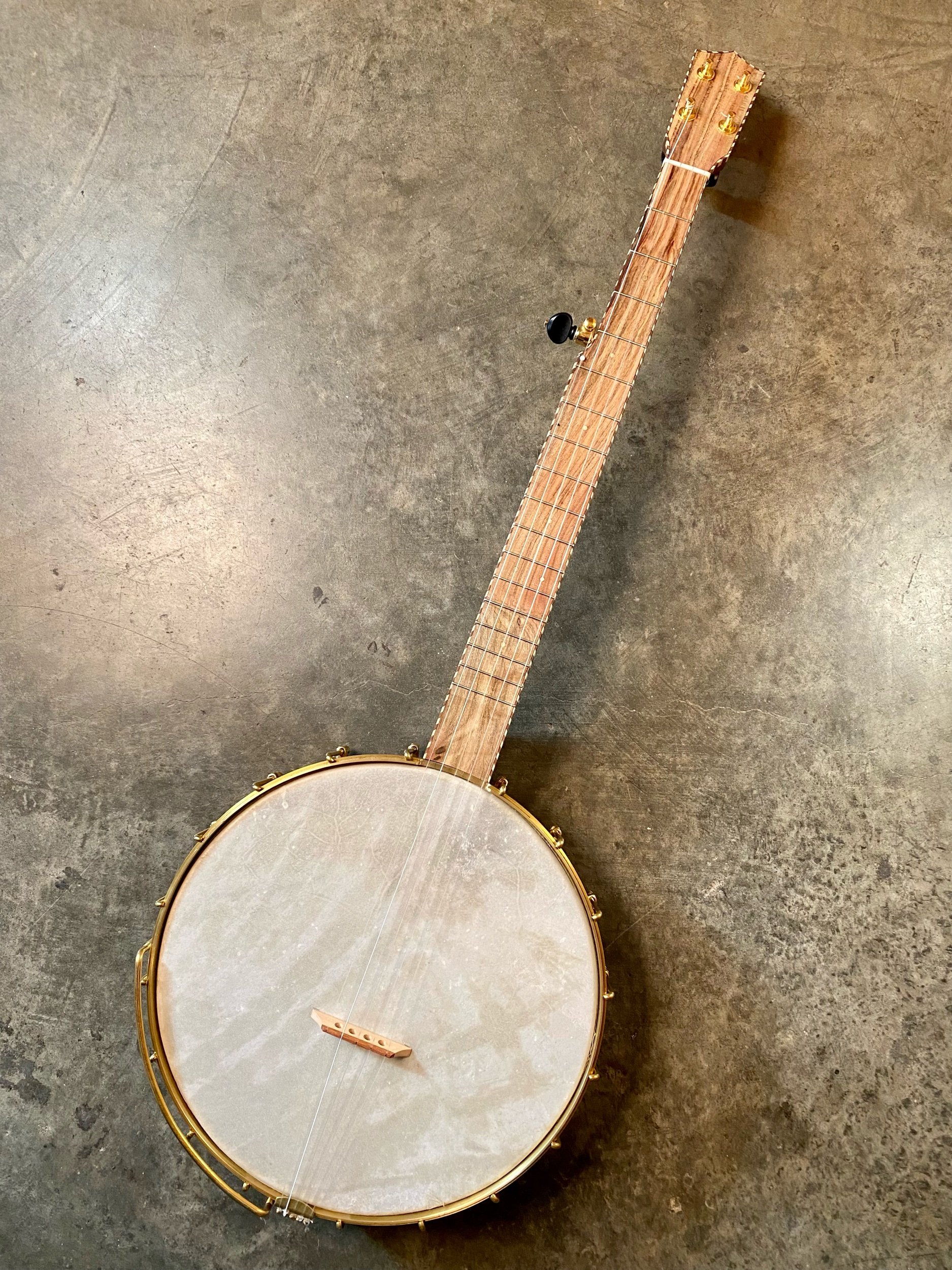Old Douglas Fir is a favorite of mine. In this case, I cut up an old door and a piece of scrap wood and put it back to work as a banjo. A few pieces of Cherry and Maple had some strength, mass and a subtle color contrast. Over all, I’m really pleased with it and may try it again. All the wood for this project was salvaged from the Carpenter Ant stash in Portland.
“Hi Nicole & Aaron,
....I am very happy with the short scale banjo, just like everything else you have built for me these last few years. Aarons description of it as a “couch banjo” is spot on. The shorter neck length makes it very comfortable to play, its really light but still feels solid, and has that low, plunky old timey sound that is perfect for clawhammer and finger picking.
Thanks for all you do!
- J. P. ”











































































































































